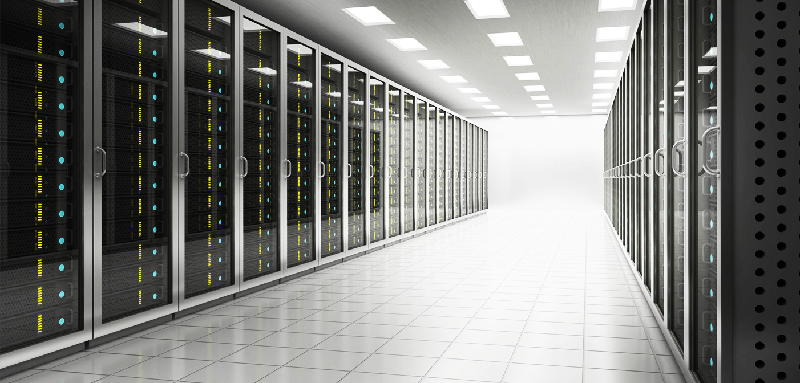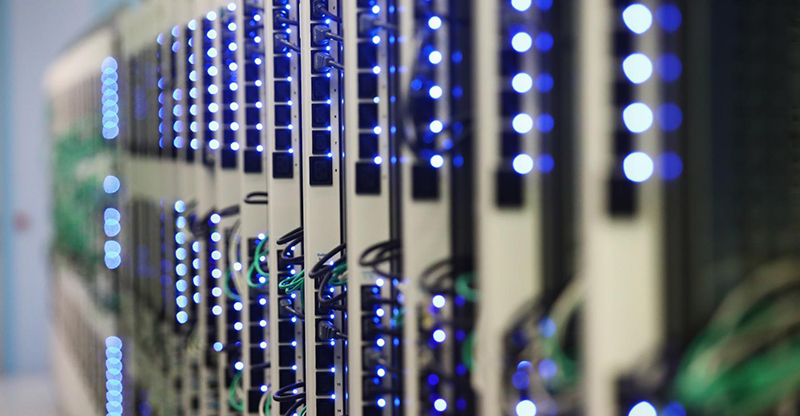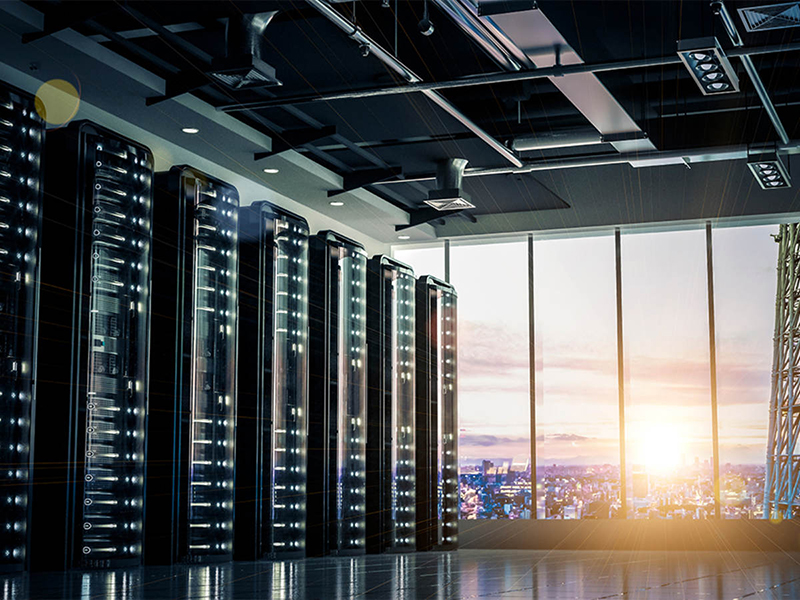As we all know, the data center design is a big project and we need to consider many things, such as how many servers we need, how big the center we build, etc. In this article, let’s consider these 13 important tips.

1.Where will the data center be built?
It is very important to analyze the climatic conditions where the new data center is located. This will help determine the most appropriate cooling measures, including water-cooled units, mechanical refrigeration and air-conditioning, natural air cooling, indirect air cooling, adiabatic cooling, etc., all for data center facilities to achieve their lower PUE goals.
2.How many racks and dimensions are needed?
The number of racks determines the space requirements of the data center. The size of a traditional IT rack is 600x1000mm (width x depth), and a machine room with a space of 100 square meters can accommodate about 50 racks. Of course, there are other sizes of racks, and knowing the size of the rack and the number of racks, it is easy to estimate the space required by your data center.
3.What level of data center is needed?
The Tier level of the data center determines the redundancy requirements and power distribution paths of the data center. For a Tier 2 data center, it is sufficient to deploy the redundancy of the power supply and cooling equipment of the “N+1” architecture. However, for a Tier3 data center facility, it usually includes “N+1” cooling equipment redundancy, dual power supply 2N power redundancy, and independent dual power distribution racks. Therefore, understanding the level of the data center can determine the redundancy design required.
4.What is the average power density of each rack?
It should be noted that when designing the power capacity of a data center, it should be based on the average power density, not the maximum rated power, which is very important. The average power density of the rack multiplied by the number of racks is the maximum IT load of the data center. Then, add the power of the data center’s power supply system, cooling system and facilities such as switches and storage equipment.
In order to avoid expensive costs, and make full use of the power system, so that the data center has the right size of power and space, it is wise to adopt a modular strategy, which can reduce costs without sacrificing flexibility for future expansion.

5.Should operation and maintenance personnel participate in planning and design?
Of course the answer is yes! Normally, the following should be done:
a.Participating in the early planning and design of operation and maintenance can make up for the lack of designers’ knowledge of system operation and management, improve design quality, and avoid or eliminate design deficiencies;
b.The operation and maintenance participates in the preliminary planning and design, and the needs of the operation and maintenance stage can be fully considered in the planning and design;
c.Participate in the preliminary planning and design of operation and maintenance, and can fully understand and master the structure of the maintained system, weak links in reliability, remaining problems, and potential risks, which will help improve the quality of operation and maintenance, and formulate operation and maintenance plans based on the basis and feasible transformation plan.
6.Avoid being affected by internal and external factors
Regarding the problem of not being able to correctly treat the differences in tendencies, preferences, restrictions, and constraints, and failing to abide by the principles of scientific design, I have the following suggestions:
a.Avoid being affected by individual decision makers in the process of approval and decision-making. Some key functions should be deleted and adjusted according to the opinions of individuals, resulting in the final delivery of data center functions that cannot meet the operation and maintenance requirements;
b.Avoid being driven by inclinations, preferences or interests. In the planning and design stage, some equipment manufacturers may influence the plan formulation and equipment selection of the planners and designers by exaggerating equipment performance and confusing concepts.
7.What level of backup battery is needed for AC rack or DC rack?
Servers racks may need to deploy 100% DC power, or 100% AC power, or a combination of the two.
For example, if a data center is being built for hosting purposes, there may be a need to be equipped with an AC (UPS) power supply system, and if it is to become a telecommunications facility, this may require the deployment of a DC power system. Knowing these, you will know the size and scale of the required DC power supply or UPS power system.
When deploying a backup battery, it is best to configure it according to the 15-minute backup discharge time. Such deployment of backup batteries will not significantly increase capital expenditures, although it will be difficult to justify, but it is more cost-effective. Companies need to increase the redundancy of backup generator sets, instead of wasting more money by increasing the number of batteries.

8.Avoid light planning and design, and heavy construction
The current situation in the industry that neglects planning and design and emphasizes construction is mainly manifested in:
a.Build the building structure first, then plan the data center, which brings insurmountable difficulties to the planning and design of the data center;
b.The phenomenon that the computer room construction and equipment installation are completed and the transformation begins;
c.Determine the equipment first, and then determine the plan. Because the function of the purchased equipment does not meet the requirements of the plan, or the site does not meet the requirements of the installation conditions, the equipment must be replaced before it is running;
d.The construction structure is difficult to meet the requirements of the data center site layout, making the computer room zoning planning unreasonable; the outdoor unit of the air conditioner cannot be installed or the distance is too far; the distance between the power room and the host room is too far, increasing transmission and management difficulties, increasing costs, and reducing reliability Sex.
9.Avoid neglecting the maintainability and repairability design of the system
The system is divided into three points for construction and seven points for maintenance. Any equipment may fail, and quick repair has become a key indicator to improve availability.
The phenomenon of neglecting maintainability and repairability is manifested in:
a.In the planning and design stage, the maintenance channel and maintenance space are not considered in the later stage. For example, the equipment is too close to the wall, the battery is placed against the wall, the cable layout is unreasonable, the cable pipe or the wire rack blocks the weak wire trough above, and the later cannot be repaired. Maintenance tools are difficult to use, etc.;
b.When a failure occurs, emergency supplies and spare parts cannot be moved quickly, and there is no maintenance operation space for replacement of faulty equipment and components, which delays the time limit for troubleshooting and even causes major accidents;
c.Failure to consider the system’s redundancy guarantee capability when equipment maintenance occurs later;
d.Use automation as much as possible to minimize the manual operation of maintenance personnel and reduce the uncertainty and uncontrollability due to manual operation.
10.Avoid lack of scientific basis for usability design
System availability is the most important indicator of data center planning and design, but there is a lack of scientific basis for planning and design. The main manifestations are:
a.When planning and designing a data center, the reliability of each system will be calculated, but at present, the basis for the calculation of reliability and the data source of the design institutes and different designers have not been unified, resulting in the design level and reliability of the same data center There are different definitions and different results;
b.For usability, there are cases where planning, design, and construction are carried out first, and then the design level is reversed after the construction is completed, and the reversed level standard is used to recommend to data center users. This is the inverted design, often because of some key defects in the design, although most of the designs meet the level requirements, the level is reduced due to the existence of key defects;
c.Only pay attention to the availability of equipment or links (subsystems), and ignore the impact of the correlation between the various subsystems in the entire system on the availability.

11.Avoid setting high indicators out of actual needs and feasibility
In the initial stage of planning and design, subjectively determine the functional indicators of the data center, and unrealistically blindly pursue large-scale, high-availability levels, high rack power density, and low energy consumption indicators PUE.
However, the specific planning and design did not strictly follow the planning principles and procedures to make detailed demonstrations. The specific plans and actual measures did not match the overall planning. The result was:
a.Due to the unclear actual needs and lack of necessary conditions for feasibility, repeated design and modification not only cause waste of costs, but also greatly extend the construction period;
b.The computer room that has been built and put into use cannot be fully utilized. The reason may be due to unexpected business demand or because the conditions of the computer room do not meet the needs of users, it must be re-optimized before it can be used;
c.The functions envisaged by the planning cannot be realized, such as the system availability cannot reach the planned level, the cooling scheme does not support the planned high power density of the rack, the generator does not support the continuous operating conditions of the system, and the excessive planning makes the system energy consumption index PUE high Wait.
12.Avoid the misunderstanding of focusing on equipment and over system
In the industry, especially the planning and design personnel, there is a common phenomenon of focusing on equipment and neglecting the system and focusing on the part and neglecting the overall situation. The main manifestations are:
a.First determine the equipment specifications and models and even the manufacturer, and then select or modify the design plan according to the equipment;
b.The power supply system is designed according to the highest available level 2N redundancy, but the result of the design is that only the UPS system has 2N functions, while the entire power supply system has a single path failure point;
c.The entire system is designed according to the highest level of redundancy and fault-tolerant system, but the air-conditioning and refrigeration equipment is powered by a single path;
d.The system is equipped with an AC standby energy diesel generator, but the generator does not have an automatic start function, because the planner lacks the understanding that continuous refrigeration is also an important condition for the continuous operation of the system.
13.Focus on overall design
It is very important to improve the overall design ability of the system to complete the planning and design tasks with high quality.
a.In the process of data center construction, there are a large number of data centers delivered that do not meet business and maintenance requirements due to inadequate consideration of planning and design for phased and professional implementation phases, as well as the connection between different professional constructions. Some problems even require major problems. The investment can only be completed after transformation;
b.Different designers only pay attention to the content they are responsible for, and lack the overall consideration of whether other majors are perfectly connected, and whether there are contradictions and conflicts with other professional designs;
c.Planning and designers lack an accurate grasp of future business development, and insufficient consideration of later capacity management and capacity expansion;
d.Planning and design personnel are not familiar with the surrounding resource environment and physical environment, and the designed scheme may have poor implementation feasibility or bring insurmountable difficulties for subsequent operation and maintenance work.

Summary
There are many other issues that need to be considered in the construction of a new data center, but industry experience tells us that mastering these thirteen key points in the process of data center construction and design helps to ensure that the final construction result is as close to the user as possible. It is worth learning from the real demand.
Related Topics:
Data Center Design: Basic 3 Layers, Core, Aggregation, and Access
How to Cool Down Your Data Center in the Hot Summer?
How to Choose a Server for Your Data Center’s Needs?
Microsoft Put the Data Center in the Ocean! A New Way for Servers Cooling?

